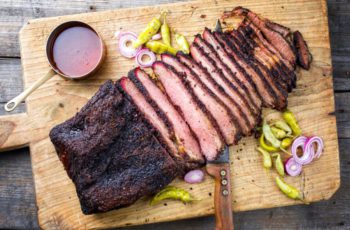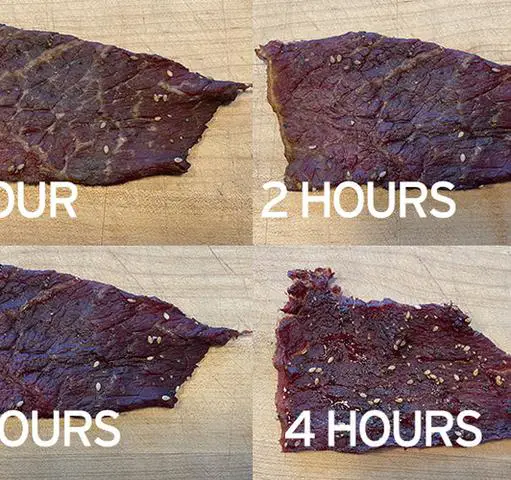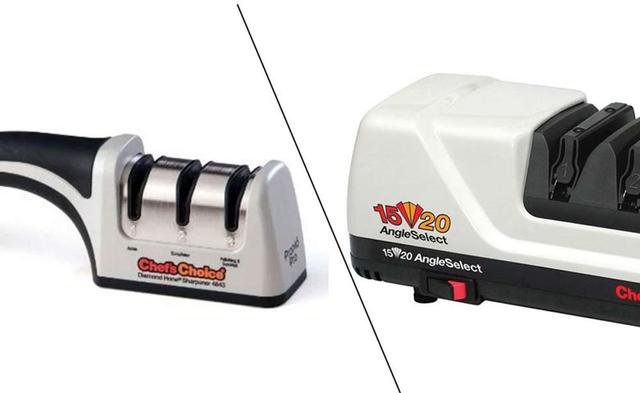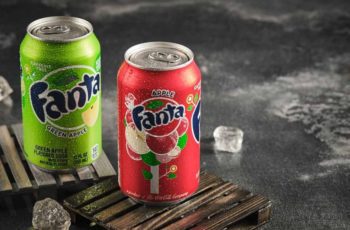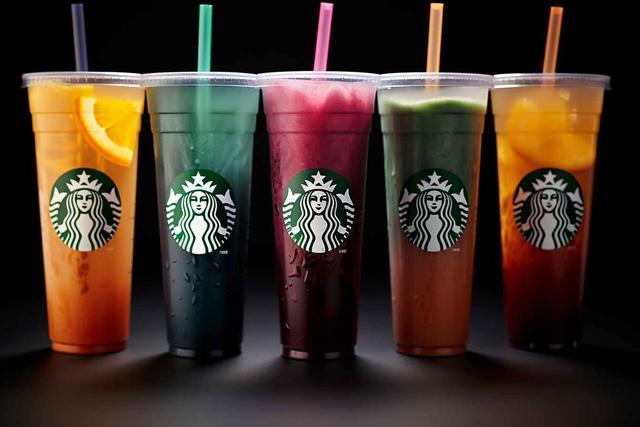
1. Understanding the Caffeine Content in Starbucks Refreshers: What You Need to Know
Curiosity about the caffeine content in Starbucks Refreshers is common among consumers, especially those conscious of their caffeine intake. With the popularity of these refreshing beverages, it’s important to know exactly ‘Do Starbucks Refreshers Have Caffeine?‘ to make informed choices. Caffeine is a stimulant that can affect the body, increasing alertness and reducing fatigue. Understanding the caffeine content in different beverages allows consumers to monitor their intake and make choices that align with their preferences and needs.
Why People Are Curious About The Caffeine Content In Starbucks Refreshers?
There are several reasons why people are curious about the caffeine content in Starbucks Refreshers:
- Health-consciousness: Many individuals are mindful of their caffeine consumption and prefer to limit their intake for various reasons, such as managing sleep patterns or minimizing dependence on stimulants.
- Sensitivity to caffeine: Some individuals are more sensitive to the effects of caffeine and may experience side effects, such as jitters or racing heart, with higher doses. Knowing the caffeine content allows them to make choices that align with their tolerance.
- Dietary preferences: People with dietary restrictions or preferences, such as avoiding coffee or tea, may turn to alternatives like Refreshers. Understanding the caffeine content helps them align their choices with their preferences.
The Importance Of Knowing The Caffeine Content In Beverages
Knowing the caffeine content in beverages is crucial for several reasons:
- Managing caffeine intake: Monitoring caffeine intake allows individuals to moderate their consumption and avoid exceeding recommended limits. This is especially vital for those sensitive to caffeine or who have health conditions that may be affected by its intake.
- Sleep quality: Caffeine can interfere with sleep, and knowing the caffeine content in beverages helps individuals avoid consuming them too close to bedtime, ensuring a better night’s sleep.
- Customizing beverage choice: Understanding the caffeine content allows individuals to select beverages that align with their desired level of alertness or relaxation. Whether seeking an energy boost or a caffeine-free option, knowledge of caffeine content guides their selection.
In conclusion, people are curious about the caffeine content in Starbucks Refreshers to make informed choices that align with their health, dietary preferences, and level of caffeine sensitivity. Awareness of the caffeine content in beverages is essential for managing intake, prioritizing sleep quality, and customizing beverage choices.
What Are Starbucks Refreshers And How Are They Made?
Starbucks Refreshers are a line of iced beverages introduced by Starbucks in 2012. They blend real fruit juices, ice, and natural flavors, offering customers a refreshing and fruity option. The main ingredient in Starbucks Refreshers is a green coffee extract, which provides a gentle boost of energy without the strong coffee flavor. These beverages are caffeine-infused and perfect for those who want a pick-me-up without the intensity of a regular cup of coffee. Green coffee extract is derived from unroasted coffee beans and contributes to the light and fruity taste of Refreshers.
Variety Of Flavors And Options Available
Starbucks Refreshers come in a variety of flavors to cater to different preferences. Some popular flavors include strawberry acai, mango dragonfruit, and pineapple passionfruit. Customers can choose to have their Refreshers with or without lemonade or coconut milk, allowing for customization and personalization. With the option to add or reduce ice, customers can also control the concentration and intensity of their drink. Starbucks also offers a selection of caffeine-free Refresher alternatives for those who are caffeine-sensitive or trying to avoid caffeine. These include the Cool Lime Refresher and the Raspberry Pomegranate Refresher, made with real fruit juice, ice, and a special blend of ingredients.
Starbucks Refreshers provide a refreshing and energizing option for customers looking for a fruity and light beverage. With the availability of different flavors and customization options, there is something for everyone to enjoy.
Do Starbucks Refreshers Have Caffeine?
So, Do Starbucks Refreshers Have Caffeine? Starbucks Refreshers do indeed contain caffeine, although the amount of caffeine varies depending on the drink size and type. While Refreshers are often marketed as refreshing and perfect for hot summer days, it’s important to note that they do contain caffeine. This may concern individuals who are sensitive to caffeine or prefer to avoid it.
How Caffeine Is Added To The Drinks?
The caffeine in Starbucks Refreshers is derived from the green coffee extract. Green coffee beans, which have not been roasted, contain more chlorogenic acid. This natural compound, lost during roasting, may have anti-inflammatory and antioxidant effects. Unlike coffee-based beverages, Refreshers do not taste like coffee at all. The green coffee extract provides a fruity flavor without a strong coffee taste.
Different Caffeine Levels In Various Flavors And Sizes
The caffeine content in Starbucks Refreshers varies depending on the size and flavor of the drink. Here is a breakdown of the caffeine levels in different sizes:
- Tall (12 fl oz): Approximately 35 mg of caffeine
- Grande (16 fl oz): Approximately 45 mg of caffeine
- Venti (24 fl oz): Caffeine content not specified
It is important to note that these caffeine levels may not suit individuals sensitive to caffeine or prefer low-caffeine beverages. For those who wish to minimize their caffeine intake, Starbucks offers a range of decaffeinated or caffeine-free options, such as herbal teas and fruit juices.
Comparison Of Caffeine Content In Starbucks Refreshers And Coffee
When it comes to caffeine content, there is a noticeable difference between Starbucks Refreshers and coffee. Here’s a comparison of the caffeine levels in these popular drinks:
- Starbucks Refreshers: The caffeine content in Starbucks Refreshers varies depending on the flavor and size. A Venti (24-ounce) Refresher contains around 60 to 80 milligrams of caffeine. This moderate caffeine level provides a subtle boost without the intensity of the coffee.
- Coffee: Coffee, on the other hand, is known for its higher caffeine content. The caffeine levels in coffee can vary depending on the brewing method, bean type, and serving size. A standard cup of brewed coffee typically contains around 95 milligrams of caffeine. However, espresso-based drinks like lattes and cappuccinos can have higher caffeine levels due to the concentration of espresso shots used.
Understanding the caffeine levels in different beverages can help you make an informed choice based on your caffeine preferences and requirements. Whether you choose Starbucks Refreshers or coffee, both can offer a refreshing and energizing experience to suit your needs.
If you’re looking for a caffeine-free option at Starbucks, you’ll be pleased to know that there are plenty of delicious alternatives. Whether you’re sensitive to caffeine or want to avoid it, these drinks will satisfy your cravings without the buzz. Here are some caffeine-free options to explore:
Decaffeinated Coffee:
Starbucks offers decaf versions of their popular coffee blends, such as Pike Place, Veranda, Verona, and House Blend. Remember that decaf coffee still contains trace amounts of caffeine, so it’s not completely caffeine-free.
Herbal Teas:
Starbucks has a wide selection of herbal teas that are completely caffeine-free. Mint Majesty, Peach Tranquility, and Iced Passion Tango Tea are just a few of the delicious options.
Steamed Apple Juice:
If you’re in the mood for a warm and comforting beverage, steamed apple juice is a great choice. It has a sweet and tart flavor, similar to hot apple cider.
Vanilla Bean Crème Frappuccino:
If you’re looking for a cold and creamy treat, the Vanilla Bean Crème Frappuccino is perfect. Made with milk, Frappuccino base syrup, ice, and vanilla bean powder, it’s a delicious caffeine-free option.
Strawberry Lemonade:
Strawberry Lemonade is a great choice for a refreshing and fruity drink. It’s perfect for a hot summer day, made with strawberry puree, Starbucks lemonade, and ice.
Whether you’re looking for a warm and comforting beverage or a cold and refreshing treat, Starbucks has plenty of caffeine-free options. Enjoy your favorite flavors without the caffeine buzz!
Caffeine is a natural stimulant in various foods and beverages, including coffee, tea, and energy drinks. While it can provide an energy boost and enhance alertness, it’s essential to consider the potential health impact of caffeine consumption
2. Caffeine Levels in Starbucks Refreshers: A Comprehensive Guide

Starbucks Refreshers are a popular choice for those looking for a refreshing and energizing beverage. However, it’s important to know the caffeine content in these drinks to make informed choices. The caffeine levels in Starbucks Refreshers vary depending on the flavor and size of the drink.
Here is a breakdown of the caffeine levels in different sizes:
– Tall (12 fl oz): Approximately 35 mg of caffeine
– Grande (16 fl oz): Approximately 45 mg of caffeine
– Venti (24 fl oz): Caffeine content not specified
It’s important to note that these caffeine levels may not suit individuals who are sensitive to caffeine or prefer low-caffeine beverages. For those who wish to minimize their caffeine intake, Starbucks offers a range of decaffeinated or caffeine-free options, such as herbal teas and fruit juices.
Comparing the caffeine content in Starbucks Refreshers to coffee, there is a noticeable difference. While a Venti Refresher contains around 60 to 80 milligrams of caffeine, a standard cup of brewed coffee typically contains around 95 milligrams of caffeine. Espresso-based drinks like lattes and cappuccinos can have even higher levels due to the concentration of espresso shots used.
It’s important to consider your personal caffeine tolerance and preferences when choosing beverages. If you’re particularly sensitive to caffeine or have specific dietary requirements, it’s best to consult a healthcare professional before deciding about your caffeine intake.
Understanding the caffeine levels in different beverages can help you make an informed choice based on your preferences and requirements. Whether you choose Starbucks Refreshers or coffee, both can offer a refreshing and energizing experience to suit your needs.
If you’re looking for a caffeine-free option at Starbucks, there are plenty of delicious alternatives available. From decaffeinated coffee blends to herbal teas and fruit juices, you can satisfy your cravings without the buzz. Some popular caffeine-free options include steamed apple juice, vanilla bean crème Frappuccino, and herbal teas like Mint Majesty and Peach Tranquility.
Overall, knowing the caffeine content in Starbucks Refreshers and exploring caffeine-free alternatives allows you to customize your beverage choices according to your preferences and needs. Whether you’re looking for a mild energy boost or a completely caffeine-free option, Starbucks has something for everyone.
3. The Importance of Knowing if Starbucks Refreshers Have Caffeine

Knowing whether Starbucks Refreshers have caffeine is important for several reasons:
1. Managing caffeine intake: Being aware of the caffeine content in beverages allows individuals to moderate their consumption and avoid exceeding recommended limits. This is especially crucial for those who are sensitive to caffeine or have health conditions that may be affected by its intake.
2. Sleep quality: Caffeine can interfere with sleep, so knowing the caffeine content in beverages helps individuals avoid consuming them too close to bedtime. By making informed choices about their caffeine intake, individuals can ensure a better night’s sleep.
3. Customizing beverage choice: Understanding the caffeine content allows individuals to select beverages that align with their desired level of alertness or relaxation. Whether someone is seeking an energy boost or a caffeine-free option, knowledge of the caffeine content guides their selection.
4. Dietary preferences: For people with dietary restrictions or preferences, such as avoiding coffee or tea, Starbucks Refreshers may be an alternative choice. Understanding the caffeine content helps them align their choices with their preferences.
Overall, being aware of the caffeine content in Starbucks Refreshers empowers consumers to make informed choices that align with their health, dietary preferences, and level of sensitivity to caffeine. It allows them to manage their intake, prioritize sleep quality, and customize their beverage choices accordingly.
4. Curiosity About Caffeine Content in Starbucks Refreshers: Exploring the Facts
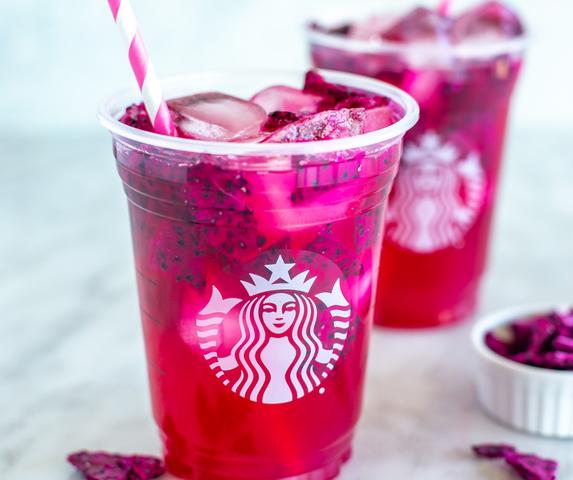
Curiosity about the caffeine content in Starbucks Refreshers is common among consumers, especially those conscious of their caffeine intake. With the popularity of these refreshing beverages, it’s important to know exactly ‘Do Starbucks Refreshers Have Caffeine?‘ to make informed choices.
There are several reasons why people are curious about the caffeine content in Starbucks Refreshers:
1. Health-consciousness: Many individuals are mindful of their caffeine consumption and prefer to limit their intake for various reasons, such as managing sleep patterns or minimizing dependence on stimulants.
2. Sensitivity to caffeine: Some individuals are more sensitive to the effects of caffeine and may experience side effects, such as jitters or racing heart, with higher doses. Knowing the caffeine content allows them to make choices that align with their tolerance.
3. Dietary preferences: People with dietary restrictions or preferences, such as avoiding coffee or tea, may turn to alternatives like Refreshers. Understanding the caffeine content helps them align their choices with their preferences.
Knowing the caffeine content in beverages is crucial for several reasons:
1. Managing caffeine intake: Monitoring caffeine intake allows individuals to moderate their consumption and avoid exceeding recommended limits. This is especially vital for those sensitive to caffeine or who have health conditions that may be affected by its intake.
2. Sleep quality: Caffeine can interfere with sleep, and knowing the caffeine content in beverages helps individuals avoid consuming them too close to bedtime, ensuring a better night’s sleep.
3. Customizing beverage choice: Understanding the caffeine content allows individuals to select beverages that align with their desired level of alertness or relaxation. Whether seeking an energy boost or a caffeine-free option, knowledge of caffeine content guides their selection.
In conclusion, people are curious about the caffeine content in Starbucks Refreshers to make informed choices that align with their health, dietary preferences, and level of caffeine sensitivity. Awareness of the caffeine content in beverages is essential for managing intake, prioritizing sleep quality, and customizing beverage choices.
5. Health-Conscious Consumers Wondering About Caffeine in Starbucks Refreshers
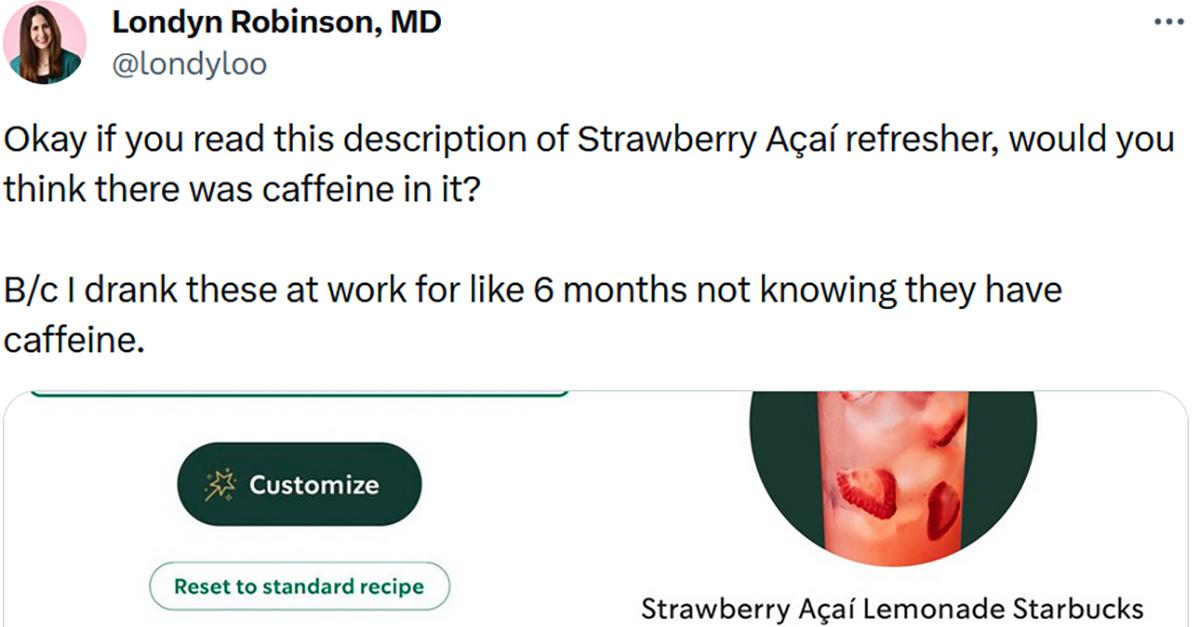
Health-conscious consumers are often curious about the caffeine content in Starbucks Refreshers because they are mindful of their caffeine consumption and prefer to limit their intake for various reasons. These individuals may be managing their sleep patterns or trying to minimize dependence on stimulants.
Some people are more sensitive to the effects of caffeine and may experience side effects such as jitters or a racing heart with higher doses. Knowing the caffeine content allows them to make choices that align with their tolerance levels.
Additionally, individuals with dietary restrictions or preferences, such as avoiding coffee or tea, may turn to alternatives like Refreshers. Understanding the caffeine content helps them align their choices with their preferences.
For health-conscious consumers, knowing the caffeine content in beverages is crucial for managing their intake and avoiding exceeding recommended limits. This is especially important for those who are sensitive to caffeine or have health conditions that may be affected by its intake.
Furthermore, understanding the caffeine content in beverages helps individuals prioritize sleep quality by avoiding consuming caffeinated drinks too close to bedtime. This ensures a better night’s sleep and overall well-being.
Lastly, knowing the caffeine content allows health-conscious consumers to customize their beverage choices based on their desired level of alertness or relaxation. Whether seeking an energy boost or a caffeine-free option, knowledge of caffeine content guides their selection process.
In conclusion, health-conscious consumers are curious about the caffeine content in Starbucks Refreshers to make informed choices that align with their health goals, dietary preferences, and level of sensitivity to caffeine. Being aware of the caffeine content in beverages is essential for managing intake, prioritizing sleep quality, and customizing beverage choices according to individual needs and preferences.
6. Sensitivity to Caffeine: Why People Want to Know About Starbucks Refreshers

Many people are curious about the caffeine content in Starbucks Refreshers because they are sensitive to the effects of caffeine. Some individuals may experience side effects, such as jitters or a racing heart, with higher doses of caffeine. Knowing the caffeine content allows them to make choices that align with their tolerance.
Additionally, individuals who are conscious of their caffeine intake may want to know the caffeine content in Starbucks Refreshers. They may be trying to manage their sleep patterns or minimize their dependence on stimulants. By knowing the caffeine content, they can make informed choices that align with their preferences and needs.
Furthermore, individuals with dietary restrictions or preferences may turn to alternatives like Refreshers instead of coffee or tea. Understanding the caffeine content helps them align their choices with their dietary preferences and avoid beverages that contain ingredients they want to avoid.
In conclusion, people want to know about the caffeine content in Starbucks Refreshers due to sensitivity to caffeine, health-consciousness, and dietary preferences. Being aware of the caffeine content allows individuals to make informed choices that align with their tolerance levels and personal preferences.
7. Dietary Preferences and Caffeine Content: The Connection with Starbucks Refreshers
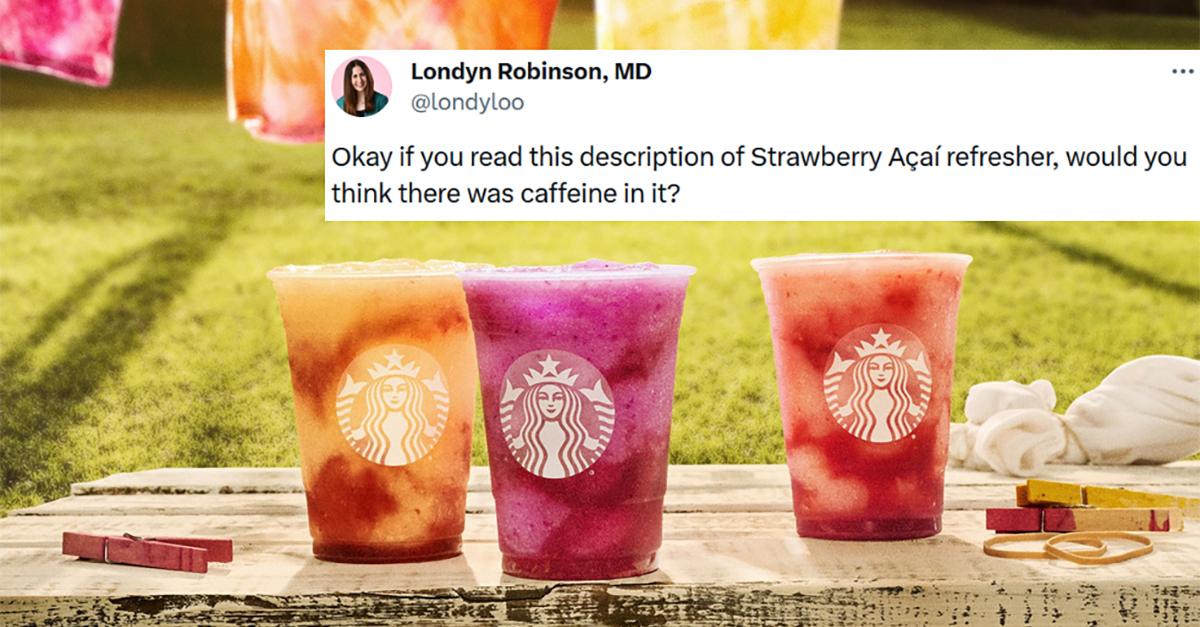
Dietary preferences play a significant role in the choices individuals make when it comes to their beverages. Some people may have dietary restrictions or personal preferences that lead them to seek out alternatives to coffee or tea. This is where Starbucks Refreshers come in, offering a refreshing and fruity option for those who want to avoid traditional caffeinated drinks.
Understanding the caffeine content in Starbucks Refreshers is essential for individuals with dietary preferences. By knowing the caffeine levels, they can align their choices with their desired caffeine intake. For example, someone who wants to minimize their caffeine consumption may opt for a flavor of Refresher with lower caffeine content or choose a decaffeinated option.
Starbucks offers a range of flavors and customization options for Refreshers, allowing individuals to find the perfect beverage that suits their dietary preferences. Whether someone prefers a tropical mango dragonfruit flavor or a more classic strawberry acai, there are options available to cater to different tastes.
In addition to the variety of flavors, Starbucks also provides alternatives for those who are sensitive to caffeine or trying to avoid it altogether. The Cool Lime Refresher and Raspberry Pomegranate Refresher are both caffeine-free options made with real fruit juice and ice. These alternatives allow individuals with specific dietary preferences to enjoy a delicious and refreshing beverage without worrying about their caffeine intake.
By understanding the caffeine content in Starbucks Refreshers and exploring the various flavor options available, individuals can make choices that align with their dietary preferences. Whether someone is avoiding coffee or tea due to personal taste, health reasons, or dietary restrictions, they can still enjoy a flavorful and energizing drink from Starbucks without compromising on their preferences.
8. Managing Your Caffeine Intake with Knowledge of Starbucks Refresher’s Content
When it comes to managing your caffeine intake, having knowledge of the caffeine content in Starbucks Refreshers can be extremely helpful. Here are a few ways you can effectively manage your caffeine consumption:
1. Understand your tolerance: Everyone’s sensitivity to caffeine is different. Some individuals may be more sensitive and experience side effects even with small amounts of caffeine, while others may have a higher tolerance. Knowing your own tolerance level can help you make informed choices about the amount of caffeine you consume.
2. Read labels and ask baristas: Before ordering a Starbucks Refresher, take a look at the label or ask the barista about the specific caffeine content. This will allow you to choose a drink that aligns with your desired level of alertness or relaxation.
3. Opt for decaffeinated or caffeine-free options: If you are sensitive to caffeine or prefer to avoid it altogether, Starbucks offers a range of decaffeinated or caffeine-free alternatives. These include herbal teas, steamed apple juice, and the Vanilla Bean Crème Frappuccino.
4. Monitor your intake: Keep track of how much caffeine you consume throughout the day from all sources, including Starbucks Refreshers and other beverages or foods containing caffeine. This will help you stay within recommended limits and avoid exceeding your personal tolerance.
5. Consider timing: Caffeine can interfere with sleep quality, so it’s important to consider when you consume caffeinated beverages like Starbucks Refreshers. Avoid drinking them too close to bedtime to ensure a better night’s sleep.
6. Listen to your body: Pay attention to how your body reacts to caffeine and adjust your intake accordingly. If you notice any negative side effects like jitters or racing heart, it may be a sign that you need to reduce your consumption.
By managing your caffeine intake with knowledge of the caffeine content in Starbucks Refreshers, you can make choices that align with your preferences, health needs, and caffeine sensitivity. Remember to always consult a healthcare professional if you have specific dietary requirements or concerns about your caffeine consumption.
9. Sleep Quality and Caffeine: How Knowing About Starbucks Refreshers Can Help
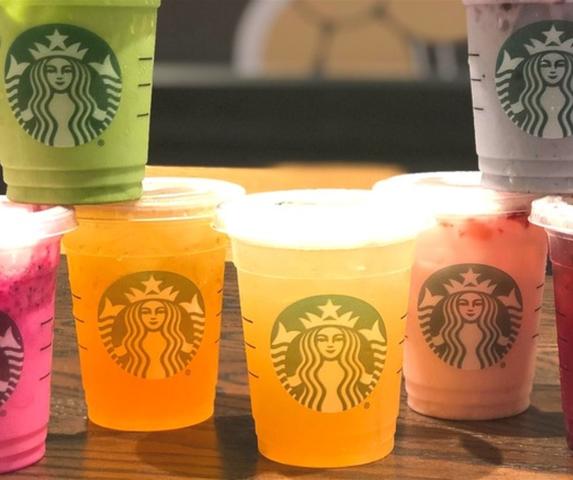
Sleep quality can be significantly impacted by caffeine consumption, which is why it’s important to understand the caffeine content in beverages like Starbucks Refreshers. Caffeine is a stimulant that can interfere with sleep patterns, making it difficult to fall asleep or stay asleep throughout the night.
By knowing the caffeine content in Starbucks Refreshers, individuals can make informed choices about when to consume these beverages. It’s recommended to avoid consuming caffeine too close to bedtime, as it can take several hours for the effects of caffeine to wear off.
For those who are sensitive to caffeine or have difficulty sleeping, opting for a caffeine-free alternative like herbal tea or fruit juice may be a better choice. These options provide a refreshing and flavorful experience without the potential negative impact on sleep quality.
In addition to avoiding caffeine too close to bedtime, individuals can also customize their beverage choices based on their desired level of alertness or relaxation. If someone is looking for an energy boost during the day, they may choose a Starbucks Refresher with higher caffeine content. On the other hand, if someone wants a soothing and calming drink before bed, they may opt for a decaffeinated option.
Understanding the caffeine content in Starbucks Refreshers allows individuals to prioritize their sleep quality and make choices that align with their preferences and needs. By being mindful of their caffeine intake and its potential effects on sleep, individuals can ensure they get a restful night’s sleep while still enjoying their favorite beverages.
10. Customizing Your Beverage Choice: The Role of Caffeine Content in Starbucks Refreshers
When it comes to choosing a beverage, customization is key for many consumers. Understanding the caffeine content in Starbucks Refreshers plays a crucial role in customizing your drink to meet your desired level of alertness or relaxation.
1. Choosing the right energy level: Some individuals may be seeking an energy boost to help them stay alert and focused throughout the day. By knowing the caffeine content in Starbucks Refreshers, they can select a flavor and size that provides the desired level of energy without going overboard.
2. Opting for a caffeine-free option: On the other hand, some individuals may prefer to avoid caffeine altogether due to sensitivity or personal preferences. By understanding which Starbucks Refreshers are caffeine-free, they can still enjoy a refreshing and fruity beverage without the stimulant effects.
3. Balancing caffeine intake with other factors: For those who already consume caffeinated beverages throughout the day, knowing the caffeine content in Starbucks Refreshers allows them to balance their overall caffeine intake. They can choose a lower-caffeine Refresher to complement their other caffeinated drinks or opt for a decaffeinated option if they need to cut back on their overall consumption.
4. Considering health conditions: Some individuals may have health conditions that require them to limit their caffeine intake, such as heart problems or high blood pressure. Knowing the caffeine content in beverages like Starbucks Refreshers helps them make informed choices that align with their health needs and restrictions.
5. Personal taste preferences: Lastly, understanding the caffeine content allows individuals to customize their beverage choice based on their personal taste preferences. They can select a flavor and size that suits their palate while still being mindful of their overall caffeine intake.
In conclusion, knowing the caffeine content in Starbucks Refreshers is essential for customizing your beverage choice based on your desired energy level, sensitivity to caffeine, overall caffeine intake, health conditions, and personal taste preferences. By being informed about the caffeine content, you can enjoy a refreshing and customized drink that aligns with your needs and preferences.
In conclusion, Starbucks Refreshers do contain caffeine, although in lower amounts compared to coffee and other caffeinated beverages. For those seeking a refreshing and lightly energizing option, Starbucks Refreshers can be a suitable choice. However, individuals sensitive to caffeine should still exercise caution and consider their personal tolerance levels.
Learn More About Grilling
If you want to learn more about grilling, check out these other helpful resources!

